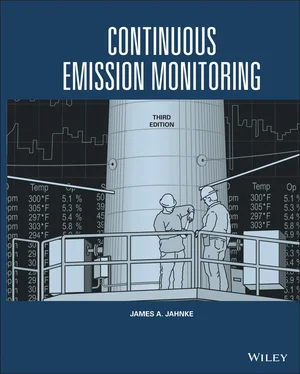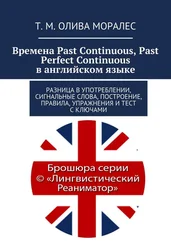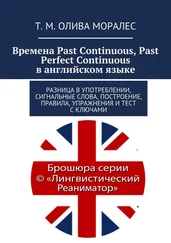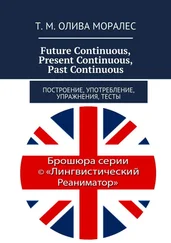James A. Jahnke - Continuous Emission Monitoring
Здесь есть возможность читать онлайн «James A. Jahnke - Continuous Emission Monitoring» — ознакомительный отрывок электронной книги совершенно бесплатно, а после прочтения отрывка купить полную версию. В некоторых случаях можно слушать аудио, скачать через торрент в формате fb2 и присутствует краткое содержание. Жанр: unrecognised, на английском языке. Описание произведения, (предисловие) а так же отзывы посетителей доступны на портале библиотеки ЛибКат.
- Название:Continuous Emission Monitoring
- Автор:
- Жанр:
- Год:неизвестен
- ISBN:нет данных
- Рейтинг книги:4 / 5. Голосов: 1
-
Избранное:Добавить в избранное
- Отзывы:
-
Ваша оценка:
- 80
- 1
- 2
- 3
- 4
- 5
Continuous Emission Monitoring: краткое содержание, описание и аннотация
Предлагаем к чтению аннотацию, описание, краткое содержание или предисловие (зависит от того, что написал сам автор книги «Continuous Emission Monitoring»). Если вы не нашли необходимую информацию о книге — напишите в комментариях, мы постараемся отыскать её.
The new edition of the only single-volume reference on both the regulatory and technical aspects of U.S. and international continuous emission monitoring (CEM) systems Continuous Emission Monitoring
Continuous Emission Monitoring:
Continuous Emission Monitoring, Third Edition
Continuous Emission Monitoring — читать онлайн ознакомительный отрывок
Ниже представлен текст книги, разбитый по страницам. Система сохранения места последней прочитанной страницы, позволяет с удобством читать онлайн бесплатно книгу «Continuous Emission Monitoring», без необходимости каждый раз заново искать на чём Вы остановились. Поставьте закладку, и сможете в любой момент перейти на страницу, на которой закончили чтение.
Интервал:
Закладка:
The amendment addressed the concern of Congress that the compliance status of most emission sources was determined only periodically by conducting manual stack tests. It was viewed that since source operations may be highly tuned during such testing, operations may not necessarily be representative of day‐to‐day performance. Congress gave EPA the task to devise a strategy that can assure Congress (and the public) that emissions standards and limitations are being met continually, not just intermittently.
The Compliance Assurance Monitoring (CAM) rule was developed as a response to the requirement that essentially places the burden back upon the source. The CAM rule applies to sources required to obtain a Part 70 or 71 air permit and having emission units with active control devices, whose potential pre‐control device emissions are at or above the emission thresholds that define a “major” source (such as 100 tons per year). Affected sources are to develop a “CAM Plan” that will provide assurance to the agency that they are meeting their emissions limitations (Neulicht et al. 1996). The CAM plan provides for the recording of work practice procedures, equipment monitoring, and inspection procedures related to pollution control compliance. CEM systems that measure pollutant emissions directly or by parameter monitoring techniques that provide indirect determinations may also be used. A guidance document on how to write a plan has been prepared by the U.S. EPA (OAQPS 1998).
Methods incorporated into the plan are to specify indicator ranges, within which the emission source is assumed to be in compliance. The range may be simply a range of pollutant concentration, or a range of pressure drops, temperatures, voltage settings, fuel flow, gas flows, and so on. Exceeding the range then triggers a requirement for initiating corrective action.
The CAM program emphasizes the use of plant sensors and parameter monitoring techniques to avoid the installation of CEM systems. This was due to public comment on an earlier “enhanced monitoring” rule intended to meet the requirements of §702 (b) of the 1990 CAA amendments. This earlier rule, viewed as a “CEM rule,” was withdrawn, due in part to outcry over assumed CEM system costs. However, the costs associated with developing CAM plans, modifying plans when plant operations change, and reporting parameter data may ultimately be comparable to the cost of CEM systems and process monitors. If a CEM system is already installed for compliance monitoring through a permit, NSPS, or other requirement, additional monitoring is not required.
Acid Rain Program (40 CFR 75)
The EPA acid rain program was the most significant program for CEM system implementation and development since the promulgation of the NSPS requirements in the 1970s. The program was responsible for the installation of over 2000 CEM systems in the electrical utilities in a relatively short period of three years. As a result of the program, dilution extractive systems were popularized in the United States, flow monitors were applied widely, and CEM system data acquisition systems improved markedly. Also, CEM systems achieved respectability. Being necessary to support the structure of the acid rain program, CEM system operation and performance came under supervision by engineers who report to upper management levels.
The acid rain program was established through Title IV of the 1990 Clean Air Act and is codified in Parts 72‐75 of Title 40 of the Code of Federal Regulations (U.S. EPA 2020f). Parts 72–74 deal with the programmatic issues of allowance trading, whereas Part 75 addresses the continuous emission monitoring requirements that support the program. The acid rain program is a “trading program” where the trading commodity is the “allowance.” An allowance is a trading permit, corresponding to the right to emit one ton of pollutant such as SO 2,NO x, or CO 2in any year. In the program, an affected facility must be in possession of the exact number of allowances corresponding to its annual emission of SO 2in tons per year. If a coal‐fired power plant emits 30 000 tons per year of SO 2, it must have 30 000 allowances. If it has only 20 000 allowances, it must either reduce emissions by 10 000 tons during the year or it must purchase allowances to make up the difference. Allowances may be purchased, sold, banked, auctioned, or otherwise treated as negotiable securities.
The acid rain program differed from previous federal programs by applying to both existing and new electrical utilities greater than 25 MW capacity. In a trading program, a set number of allowances are initially issued to facilities affected by the program. To reduce emissions by 50%, only one‐half of the allowances necessary to cover annual emissions were provided by EPA. From SO 2emissions level of 17.5 million tons annual emissions, in 1980 for the electric utilities, only 8.9 million allowances were distributed. When fully implemented by 2010, SO 2emissions were expected to be approximately halved.
In contrast to “command and control” programs where certain control equipment or operating conditions are mandated, in trading programs a facility can choose how to comply with the rule. For example, a facility could add an SO 2scrubber to reduce emissions; it could shut down intermittently; it could burn lower sulfur fuels, switch fuels, or buy allowances at auction, or could buy allowances from a company that had “overcontrolled” its emissions and had allowances to sell. This is illustrated in the example of Figure 2‐4. In the example, each plant emits 100 tons per year, but each plant is allocated only 50 allowances. To meet their allowance requirements, the plants adopt different strategies. Plant A decides to burn low‐sulfur coal and succeeds in reducing its emissions to 50 tons per year to meet the 50 allowances it was allocated. Plant B decides to install a wet scrubbing system and reduces its annual emissions by 70 tons down to 30 tons. It has overcontrolled its emissions, but now has 20 allowances available to sell. Plant C is an older plant and finds it too expensive to reduce its emissions by 50%. It decides to reduce them by only 30% down to 70 tons per year. To meet its allowance obligation at the end of the year, it then buys the 20 allowances available from Plant B.
The advantages of a trading program are that a source has choices instead of mandates and can change control strategies without notifying the agency. A trading program also changes the character of environmental management from spending money for compliance to possibly profiting by controlling its emissions more than it is required. Additionally, the similarity of an “allowance” to a “security” is understandable to corporate management and helps management to participate in a game with which it may be more familiar. Here, a strategy’s success or failure can be measured; and that measurement is made by CEM systems.
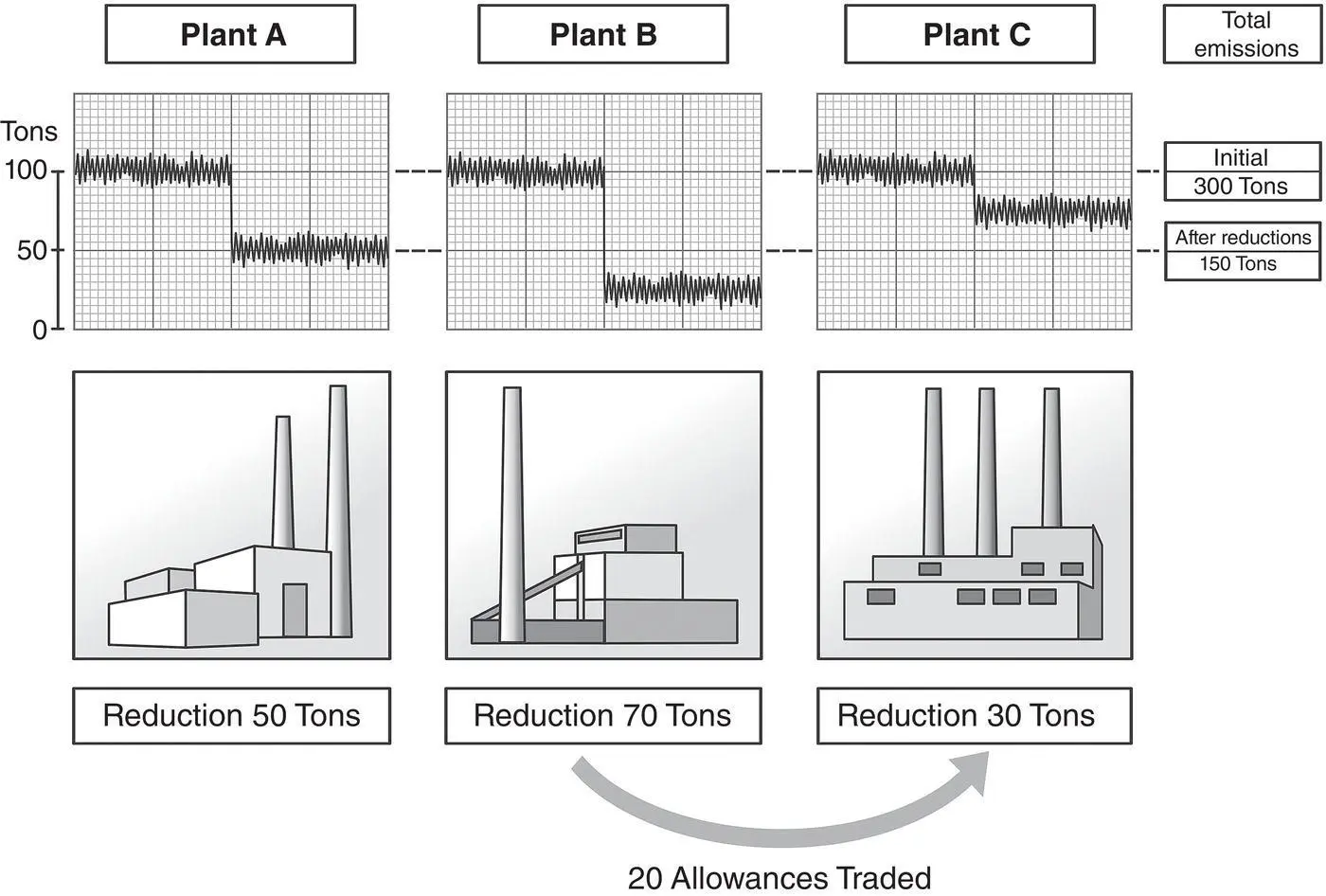
Figure 2‐4 Trading allowances.
Trading allowances requires a high degree of confidence in the negotiable instrument, the allowance. To calculate SO 2mass emission rates, the flue gas volumetric flow rate must also be known. This is shown in Equation 2‐1.
(2‐1) 
where
pmrs = pollutant mass rate (kilograms per hour, tons per year)
cs = pollutant concentration (milligrams per cubic meter, pounds per cubic foot)
Qs = volumetric flow rate (cubic meters per hour, cubic feet per hour)
Читать дальшеИнтервал:
Закладка:
Похожие книги на «Continuous Emission Monitoring»
Представляем Вашему вниманию похожие книги на «Continuous Emission Monitoring» списком для выбора. Мы отобрали схожую по названию и смыслу литературу в надежде предоставить читателям больше вариантов отыскать новые, интересные, ещё непрочитанные произведения.
Обсуждение, отзывы о книге «Continuous Emission Monitoring» и просто собственные мнения читателей. Оставьте ваши комментарии, напишите, что Вы думаете о произведении, его смысле или главных героях. Укажите что конкретно понравилось, а что нет, и почему Вы так считаете.
